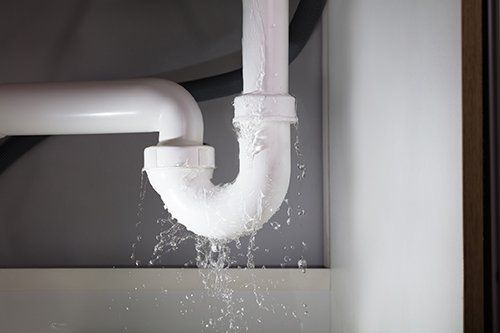Identify A Half-Dozen of Principal Leak Factors Inside The House
Identify A Half-Dozen of Principal Leak Factors Inside The House
Blog Article
Just how do you actually feel when it comes to Most Common Causes of Leaky Pipes?

Leakages not just cause waste of water but can also trigger unneeded damages to your residence and also promote unwanted organic development. By looking as well as understanding for everyday situations that create leakages, you can secure your residence from future leaks as well as unneeded damage.
Trespassing origins
Most water leakages begin outside the house rather than inside it. If you discover an unexpected decline in water stress, state in your tap, take some time to go out as well as analyze your yard. You may see wet patches or sinkholes in your lawn, which might imply that tree origins are attacking water lines creating water to seep out. You can have your plumber check for intrusion, especially if you have trees or bushes near your residential or commercial property.
Rusty water supply
This could be the cause of discoloration or bending on your water pipes. If our plumbing system is old, take into consideration replacing the pipes because they are at a greater threat of rust than the newer models.
Defective Pipeline Joints
The factor at which your pipes link is often the weakest web link in the waterline. Pipe joints can degrade over time, leading to water leakages. Sadly, the majority of pipeline joints are not conveniently visible. If you have noisy pipes that make ticking or banging noises, particularly when the warm water is switched on, your pipe joints are most likely under a great deal of stress. It is recommended to have your plumber check your system annually.
Instant temperature changes.
Severe temperature modifications in our pipelines can trigger them to expand and acquire all of a sudden. This growth and contraction might trigger fractures in the pipelines, especially if the temperature level are below freezing. If you maintained an eye on how your plumbing works, it would certainly be best. The existence of the formerly discussed scenarios frequently suggests a high risk.
Poor Water Connectors
Sometimes, a leakage can be caused by loosened pipes as well as pipelines that provide your home appliances. Generally, moving is what triggers the loosened water Links. You may find when it comes to a washing equipment, a pipe may spring a leak as a result of drinking during the spin cycle. In case of a water connections leakage, you may notice water running straight from the supply line or pools around your home appliances.
Blocked Drains
Obstructed drains pipes could be bothersome as well as inconveniencing, yet they can in some cases end up triggering an overflow leading to break pipelines. Maintain eliminating any products that may decrease your drains that might obstruct them to prevent such inconveniences.
All the above are sources of leakages however not all water leakages result from plumbing leaks; some leakages might originate from roof leakages. All leakages should be repaired immediately to prevent water damages.
Leakages not just cause waste of water but can likewise cause unneeded damages to your residence and promote undesirable organic growth. By understanding and looking for day-to-day situations that trigger leaks, you can shield your house from future leakages and unnecessary damage. Today, we will look at six leakage creates that may be triggering your pipelines to leak.
At times, a leak can be caused by loosened pipes as well as pipes that provide your home appliances. In situation of a water links leakage, you may see water running straight from the supply line or puddles around your appliances.
How To Check For Water Leak In Your Home
How To Check for Leaks
The average household's leaks can account for nearly 10,000 gallons of water wasted every year and ten percent of homes have leaks that waste 90 gallons or more per day. Common types of leaks found in the home are worn toilet flappers, dripping faucets, and other leaking valves. These types of leaks are often easy to fix, requiring only a few tools and hardware that can pay for themselves in water savings. Fixing easily corrected household water leaks can save homeowners about 10 percent on their water bills.
To check for leaks in your home, you first need to determine whether you're wasting water and then identify the source of the leak. Here are some tips for finding leaks:
Take a look at your water usage during a colder month, such as January or February. If a family of four exceeds 12,000 gallons per month, there are serious leaks.
Check your water meter before and after a two-hour period when no water is being used. If the meter changes at all, you probably have a leak.
Identify toilet leaks by placing a drop of food coloring in the toilet tank. If any color shows up in the bowl after 10 minutes, you have a leak. (Be sure to flush immediately after the experiment to avoid staining the tank.)
Examine faucet gaskets and pipe fittings for any water on the outside of the pipe to check for surface leaks.
Undetected water leaks can happen without the home or business owner even realizing. If you suspect a water leak, but not able to find the source. It is time to contact a professional water leak detection service, The Leak Doctor.
How To Find a Water Leak In Your Home
https://www.leakdoctor.com/blog/How-To-Check-For-Water-Leak-In-Your-Home_AE197.html

Do you really like reading about How to detect water leaks in your home? Create a review down below. We would be delighted to find out your views about this blog entry. We are looking forward that you come back again later on. Feel free to take the opportunity to share this blog entry if you appreciated it. I take joy in reading our article about How to Find Water Leaks.
Contact Report this page